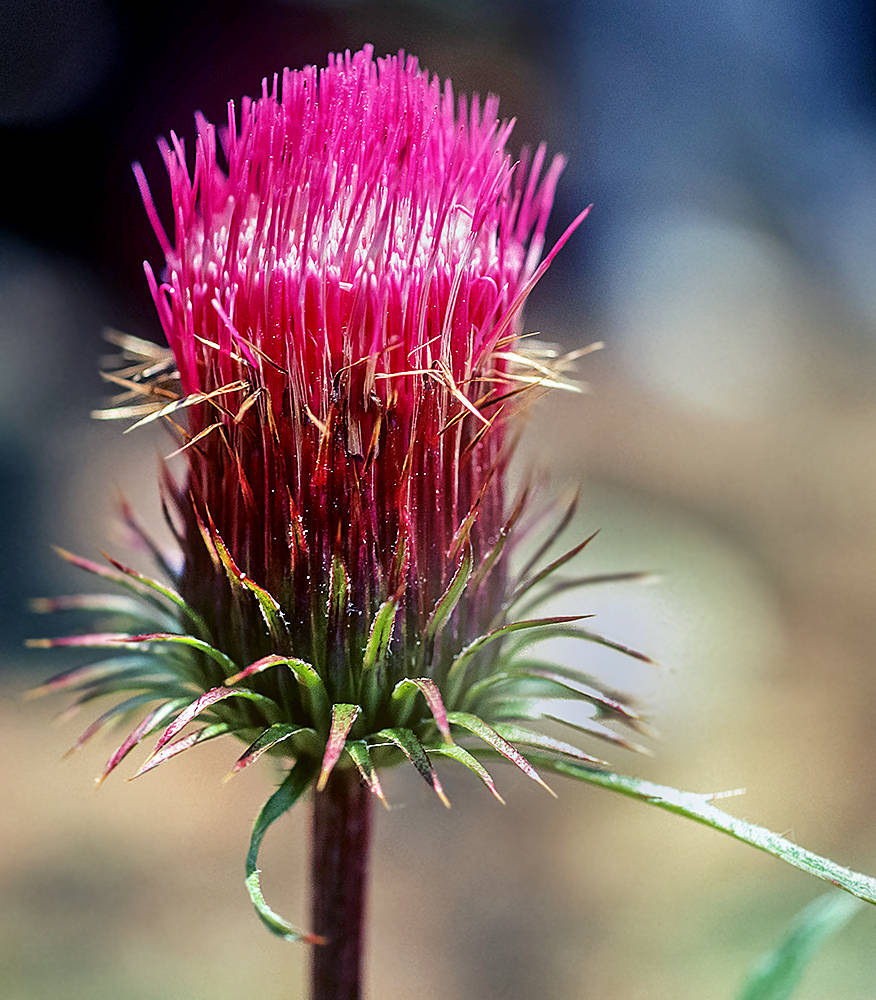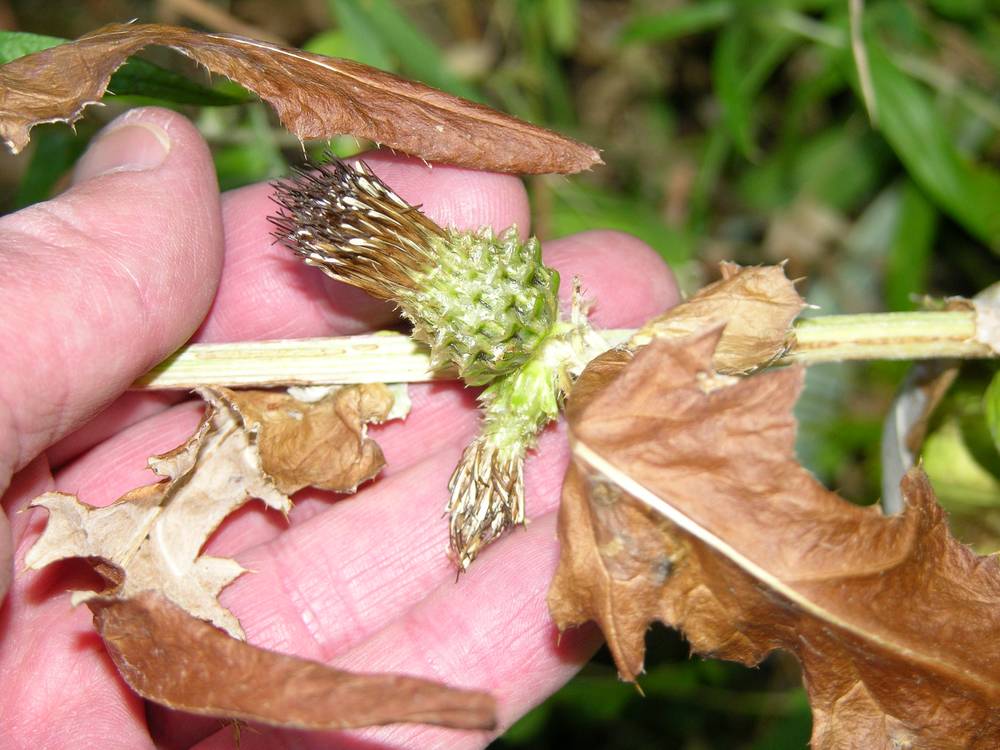Cirsium andersonii
Cirsium
Anderson's thistle
thistle
usually 1, sparsely arachnoid-tomentose to glabrate.
erect, branched or simple, sometimes spiny-winged.
elliptic to linear-oblong, 8–20(35) × 2–8 cm, gradually reduced above;
margins coarsely dentate or 1–2-pinnate;
spines 1–5 mm;
surfaces abaxially ± thinly gray-tomentose, adaxially glabrous to sparsely pilose;
basal usually present at flowering, clasping to petiolate.
basal and cauline, alternate;
margins entire to deeply toothed or pinnately lobed;
lobes and teeth usually spiny.
heads solitary at branch tips or distal axils, or in raceme- or panicle-like arrays.
broadly cylindric to narrowly campanulate, 3–5 × 2–4 cm, glabrous to thinly tomentose.
flat to convex; very bristly;
paleae 0.
corollas 30–45 mm, red, occasionally red-purple;
tubes 10–20 mm;
throats abruptly narrowed to tubes, 10–16 mm;
lobes 9–11 mm;
styles conspicuously exserted;
tips 3.5–5 mm, sometimes geniculate.
corollas bilateral, white or cream-colored to pink, red, or purple;
style tips elongate.
without glutinous ridges;
spines weak, 1–3 mm; outer short, linear-lanceolate, appressed;
margins entire or spiny-ciliate;
tips long-acuminate; inner linear; long; entire;
tips red to purple; flat.
many in 5–20 series, imbricate or not;
margins usually entire or occasionally scarious, ciliate-spiny, or erose;
midveins sometimes with glutinous ridges.
6–7 mm, brown;
pappi 25–40 mm.
compressed; ovoid, tan to dark brown, glabrous, attachment scar off-center;
pappi in 3–5 series, persistent or deciduous in rings.
1–6 per branch;
lateral heads widely spaced along distal portions of branches.
discoid, pedunculate or sessile.
Cirsium andersonii
Cirsium
Open grasslands, montane woodlands. Flowering Jul–Sep. 1500–2500 m. ECas. CA, NV. Native.
Cirsium andersonii, while currently rare in Oregon, is well documented in northern California and Nevada.
Africa, Asia, Europe, North America. ~200 species; 15 species treated in Flora.
The taxonomy of Cirsium is complicated by hybridization and a high level of morphological variation within species. Style tips are measured including the somewhat swollen nodes and fused portions of style branches. Cirsium ochrocentrum var. ochrocentrum has been collected once in Oregon (2013) but does not appear to be naturalized.
Bridget Chipman
Bridget Chipman




